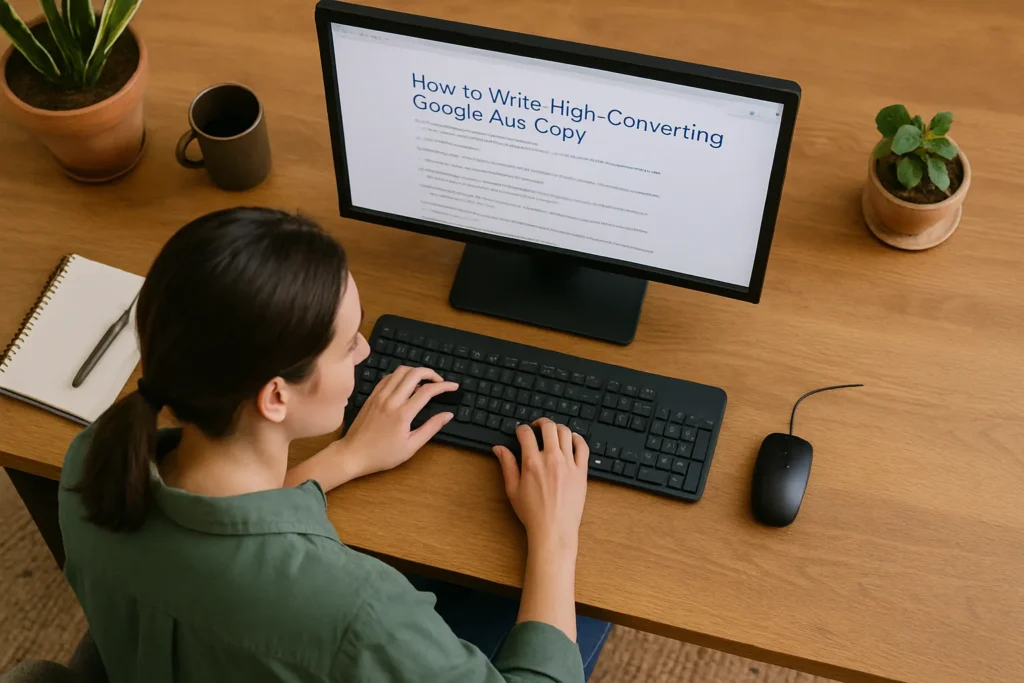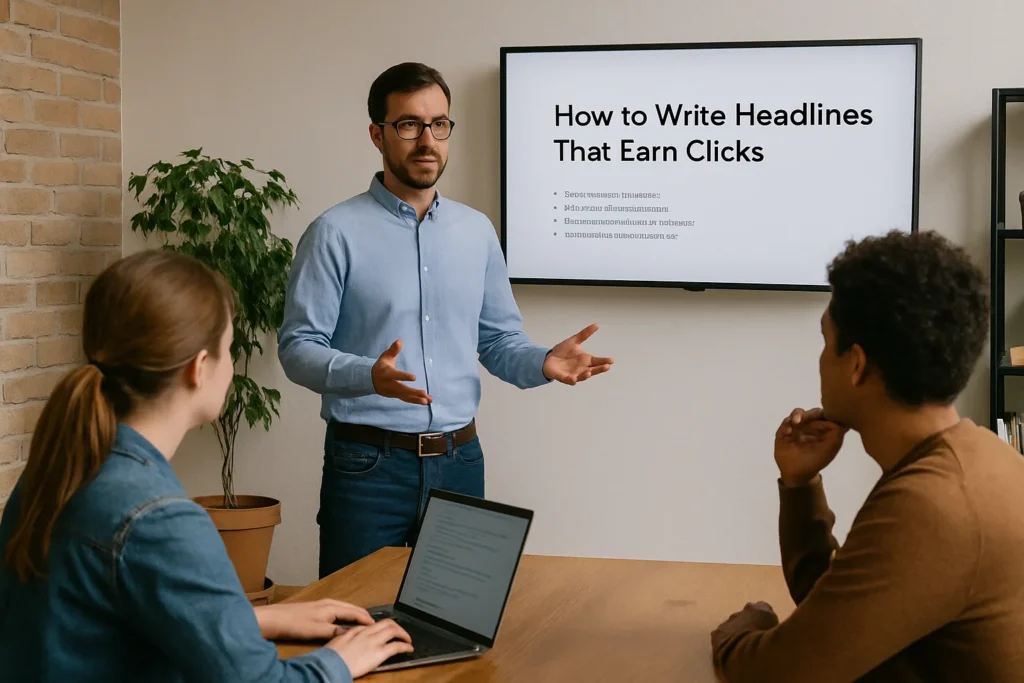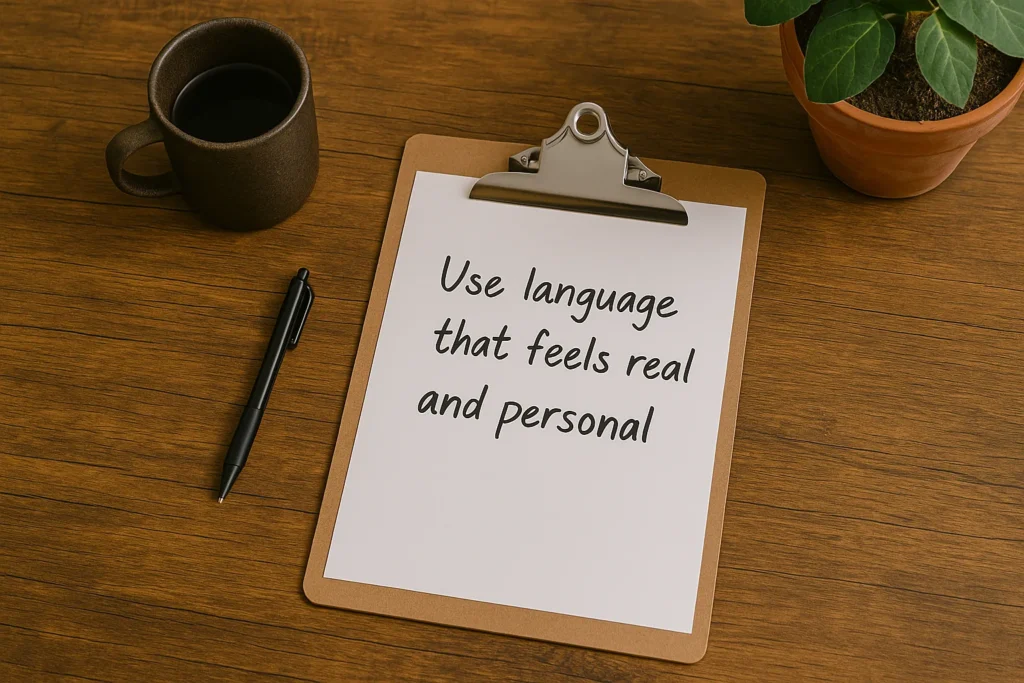If your Google Ads aren’t converting, it could be your ad copy.
We understand that running Google Ads can be tricky, and there’s a lot that needs to work together. You need a great landing page, a good bidding strategy, and a high enough budget to outbid your competition. But in our experience, if you don’t nail your ad copy, you’re not going to make money.
Think of it this way: If a user is searching for something, and your ad copy doesn’t make them want to click immediately, they’re going to skip right over you and click on a competitor’s site below.
Don’t worry, we’re going to show you everything we know based on our years of experience writing high-converting Google Ads copy.
In this guide, you’ll learn:
- How to write ad copies that catch attention
- Easy ways to write headlines that get more clicks
- How to use tools like a headline generator in a smart way
- Quick fixes to get more conversions and lower your ad costs
Sounds good? Let’s get started.
What Is an Advertising Copy in Google Ads?
An advertising copy, or ad copy, is the main message your audience sees when your ad appears in Google Ads. It’s the headline, description, and display URL, written in a few tight lines to convince someone to click.
A good ad copy does three things:
- Matches what people are searching for
- Shows them the benefit of clicking
- Makes it easy to act fast
For example, if someone searches for “emergency plumber near me” and your ad says “24/7 Emergency Plumbing, Fast Arrival,” you’ve matched their intent and urgency in just a few words.
According to Google Ads Help, ads that reflect the searcher’s intent and use strong copy tend to perform better. It often leads to higher Quality Scores and lower costs. The higher relevance not only improves your ad’s visibility but also enhances its effectiveness.
In the next section, we’ll break down each part of a Google ad so you know exactly how to write it for real impact.

Inside a Google Ad: What Makes It Work?
A well-structured Google Ad has four basic elements. They are the headline, description, display URL, and call to action. Each one plays a different role, but together, they form a complete message that’s clear, useful, and easy to act on.
Here’s how each part of Google Ad works and what to keep in mind when writing them:
Headline
The headline is the first thing people see in your ad. It needs to grab attention quickly. So, make it clear, easy to understand, and relevant to what people are searching for.
When you use keywords your customers are already typing, your ad feels familiar and shows them they’re in the right place.
For example, if someone is looking for time-saving meal kits, a headline like “Fresh Meal Kits Delivered Weekly” gives them exactly what they want to see.
Plus, headlines that match what someone’s looking for tend to get more clicks. If your message feels like exactly what they searched for, your ad is more likely to do well (Source: Google Ads Help).
Description
The description gives you a little more space to convince the reader. This is where you talk about the benefits or features that make your product or service stand out.
You could include details like next-day delivery, customer support, or special bundles. Example: “Chef-designed meals, no prep, ready in under 20 minutes.” Keep it short and focused. This isn’t the place for long sentences or big promises without proof.
Display URL
This shows users where your ad will take them. It’s usually a clean version of your actual web link. Even though it doesn’t always show the full URL, it still needs to make sense.
If you see a website’s URL is “www.quickmeals.com/weekly-plans”, you’ll get the idea of what to expect after the click. This builds trust and lowers the chance that visitors will bounce.
Make sure the page you link to delivers on what your ad says. When everything lines up, Google sees your ad as more helpful and may give it a better Quality Score.
Call to Action (CTA)
Your CTA is the final push. It tells people what to do next. Click? Call? Shop? Or sign up? Use action words that make it simple and clear. Phrases like “Start Your Free Trial,” “Browse Meal Plans,” or “Order Today” work well.
Clear CTAs improve your results by directing the user toward action. According to Google Ads Help, a strong CTA aligned with user intent can lead to more clicks and better ad performance.
Based on our experience, when every part of your ad, like the headline, description, display URL, and CTA, lines up with the user’s goal, your ad works better. Following this structure turns a basic advertisement copy into a real conversion tool.
Now, let’s explore how to generate compelling headlines that capture attention and drive clicks.
How to Write Headlines That Earn Clicks
Your ad copy’s headline should grab attention, match what people are searching for, and give them a reason to click. It’s the most important part of your Google Ad.
If the headlines of your ad copy feel relevant and useful, visitors will read more. If it misses the mark, they’ll scroll past. Get your headlines right, and everything else gets easier.
Here’s how to write headlines that work:
- Match what people are searching for: Use words that mirror the user’s exact query. If someone types “meal kits near me,” use a headline like “Fresh Meal Kits Delivered Near You.” This increases relevance, which improves your ad’s visibility and click-through rate.
- Include numbers or specific results: Numbers make your ad more believable and easier to scan. Try something like “Only $39 for Your First Box” or “Meals Ready in 15 Minutes.” A study by Cambridge University Press indicates that headlines with numbers can boost click-through rate.
- Create urgency or a reason to act fast: Headlines like “Order by 4 PM for Same-Day Shipping” or “Only 3 Spots Left, Apply Now” help the reader feel they should act right away. Scarcity pushes action.
- Use headline variations with a clear testing goal: Don’t just write two headlines at random. Test one with a benefit vs. one with urgency. Example: Test “Save 20% Today” against “Try 3 Meals for Free.” Keep the one that gets better clicks.

Pro Tip: Use the tone and structure of a newspaper headline example. It’s short, punchy, and loaded with value in as few words as possible.
Once someone clicks your ad, you want them to convert. Let’s look at how better copy helps increase conversions and how that ties into Google’s quality score.
What Would Help Improve Conversions and Increase Ad Quality Score?
To get more conversions and better results, your ad and landing page need to work well together. When someone clicks your ad and sees the same message on the landing page, they’re more likely to stay and take action.
Google gives your ad a Quality Score between 1 and 10. This score is based on how well your ad, keywords, and landing page match what someone is searching for. A higher score can help your ad show up more often and cost less per click.
Here’s how you can improve conversions and increase ad quality score:
- Keep your message consistent from ad to page: When someone clicks an ad that says “First Month Free, Cancel Anytime”, they expect that same message at the top of the landing page. If they don’t see it, trust drops, and they leave. So, the learning here is that consistency builds confidence and improves your Quality Score.
- Write for one goal only: Each landing page should have a single, clear focus. If your ad promotes weekly meal kits, the landing page shouldn’t also pitch cookware or a newsletter. One goal = higher conversions and fewer distractions.
- Use short, benefit-driven copy on the landing page: Keep your page text simple and focused on what the user gets. Instead of listing every feature, show what’s in it for them. Write, “Choose your meals in under 2 minutes. Delivery starts Monday.”
- Page speed and design count, too: Google includes landing page experience in its scoring system. If your site loads slowly or looks messy on mobile, both your conversions and quality score will suffer. Think with Google reports a 90% higher bounce rate if your page takes over 5 seconds to load.
We worked with a skincare brand that tested the same ad on two different pages. One was a messy homepage with too many distractions. The other repeated the ad’s offer and gave clear next steps. And guess what? The second page doubled their conversions and cut their cost per click by 27%.
Want some help generating strong headlines? Let’s look at headline generators and how to make the most of them, without sounding robotic.
Use a Headline Generator, Then Customise for Performance
A headline generator is a tool that gives you quick headline ideas based on a few keywords or a short description. It’s designed to help speed up the writing process. Some tools even let you choose a tone or goal, so the suggestions better fit your ad style.
Headline generators can be helpful, especially when you’re writing lots of ad copy and need fresh ideas fast. But while these tools save time, the suggestions can sound a bit plain or generic.
A headline might get attention, but it won’t feel personal unless you add a personal touch to it. That’s why it’s always better to take what the tool gives you. And then rewrite the headline so it sounds like something your business would say to a real customer.
How to effectively use headline generators:
- Start with a tool you trust: Use a headline generator that lets you give it good info, like what you’re offering and who you’re trying to reach. A good example is HubSpot’s Headline Generator, which asks for your keywords and tone before giving ideas. It’s fast and simple to use.
- Make it sound like you: Don’t copy the headline exactly. Edit it so it sounds like something your business would say. Add your uniqueness, your product name, or who the target consumer is. That helps it connect with real people instead of sounding like a robot wrote it.
- Try more than one version: Once you’ve made a few headline options, test them. Run both for a few days and see which one gets more clicks. You might find that just changing one word makes more conversions. Keep the winner and use it again next time.
Based on our experience, we’ve seen that headlines that mention a discount, time-limited deal, or outcome perform better than generic ones. Start with phrases like “Get 20% Off” or “Start Seeing Results in Just 3 Days.” These kinds of headlines give people a reason to click right away.
Great headlines grab attention. But emotional words and clear benefits are what keep people interested. Now, we’ll walk through how to write ad copy that feels human and encourages people to respond positively.
Write with Emotion and Benefits
Ever read an ad that felt like it understood you? That’s what strong copy does. It should speak clearly and show how something helps in real life.
Don’t just list features, let the consumers know the result. If your ad solves a problem, say it. No fluff.
Use words that sound like how real people talk. Try phrases that make someone feel calm, confident, or understood. When your ad feels like it’s speaking directly to the visitors, they’re more likely to remember it. And when people remember your ad, they’re more likely to click.
Use language that feels real and personal
Words that reflect everyday thoughts and emotions are easier to connect with. If your copy speaks to common desires like comfort, ease, or feeling in control, it will feel more natural and relatable.

Examples:
- “Feel confident in your skin.”
- “Enjoy hassle-free returns.”
- “Treat yourself to a break that feels like one.”
When your ad sounds like a personal suggestion instead of a sales pitch, it feels more honest. That helps build trust. Adding details like location, urgency, or outcomes (e.g., “Join 5,000 happy customers in Sydney”) can make your copy feel even more grounded and relevant.
Keep your tone friendly and natural
To sound friendly or natural you don’t need making promises or over-the-top words. Be yourself. When you start writing, imagine you’re chatting with a friend. In that way, you’ll keep your copy writing honest, and clear. A relaxed, honest tone makes your ad feel more natural, especially when most ads sound stiff or overly polished.
For example, instead of saying “Satisfaction guaranteed for all first-time users,” you could say, “Try it risk-free and see what you think.” It sounds more casual and gives the reader a sense of control. That kind of language builds comfort, which is important when people are comparing lots of options and trying to make a quick decision.
When you’re writing ad copy, a good question to ask is, “What does this do for the person reading it?” Try to focus less on what the product is and more on what it helps someone do or feel.
Once you’re thinking in terms of outcomes, it’s easier to write ads that connect. The best-performing ads tend to highlight simple, real-life benefits and make a personal connection. When your copy shows how your product helps someone feel more confident, saves them time, or takes stress off their plate, it sticks. It also helps you stand out in a space where many ads just blur together. That’s how you make your message count.
Get Better Results from Your Google Ads
Now you know what separates a forgettable Google Ad from one that brings in clicks and customers. It’s the message you deliver and how well it connects with what people are looking for.
The right words, used at the right time, can turn a scroll into a click and a click into a customer.
Throughout this guide, you’ve seen how to write headlines that get attention, make ad copy that speaks to real needs, and build a smoother path from ad to conversion. You’ve also learned how to use emotion, clarity, and benefits to guide people toward saying “yes.”
If you’re ready to take your ads from “good enough” to high-performing, we’re here to assist you. Visit Slamstop to discover how we can support your next Google Ads campaign with sharper copy and better results.
Let’s turn your ad spend into real, measurable growth.
